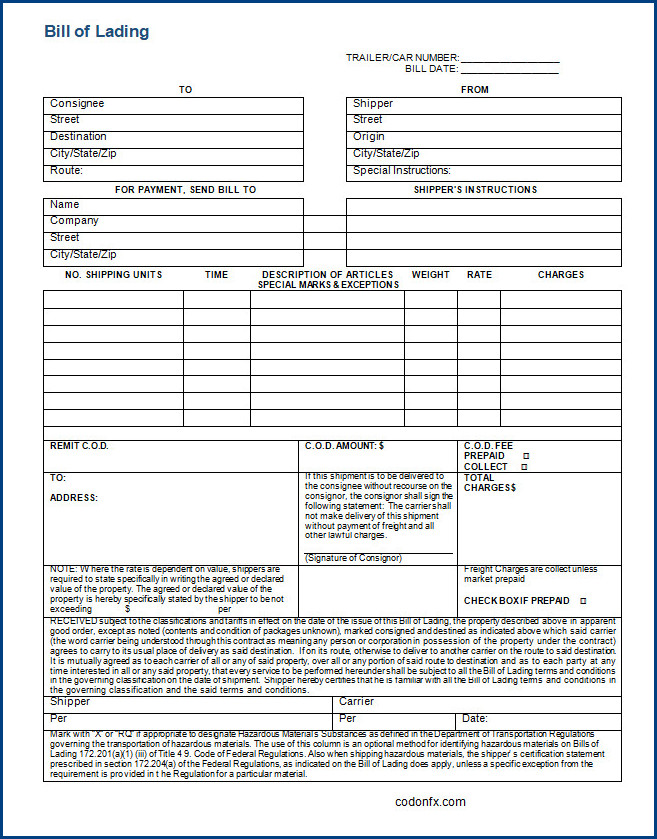What is a bill of lading?
A bill of lading is a legal document that serves as evidence of a contract and receipt of goods being transported by a carrier. It is typically issued by the shipping company or carrier and acts as proof of ownership of the goods until they reach their final destination.
The primary purpose of a bill of lading is to provide a detailed record of the shipment, including information about the goods, the shipper, the consignee, and the carrier. It also outlines the terms and conditions of the transportation agreement, such as the agreed-upon rates, the mode of transportation, and the delivery instructions.
Why is a bill of lading important?
The importance of the bill of lading lies in its various benefits, which ensure smooth and secure cargo transportation.
- Proof of ownership: The bill of lading acts as proof of ownership for the goods being transported. It provides evidence that the shipper has legal rights over the goods and can claim them upon arrival at the destination.
- Receipt of goods: The bill of lading serves as a receipt of the goods being shipped. It includes detailed information about the quantity, weight, and condition of the cargo, ensuring that both the shipper and the carrier are aware of the goods being transported.
- Contractual obligations: The bill of lading outlines the contractual obligations between the shipper and the carrier. It specifies the terms of transportation, including the agreed-upon freight charges, delivery instructions, and any special requirements or conditions.
- Documentary credit: In international trade, the bill of lading is often required by banks as a document of title to release payment or to provide security for the buyer. It can be used as a negotiable instrument or as collateral for financing arrangements.
- Insurance coverage: The bill of lading is crucial for obtaining insurance coverage for the goods during transportation. It provides evidence of the cargo’s value and condition, allowing the shipper to file claims for any loss or damage that may occur during transit.
- Legal protection: The bill of lading offers legal protection to both the shipper and the carrier. It establishes the rights and responsibilities of each party, ensuring that any disputes or issues can be resolved by the terms outlined in the document.
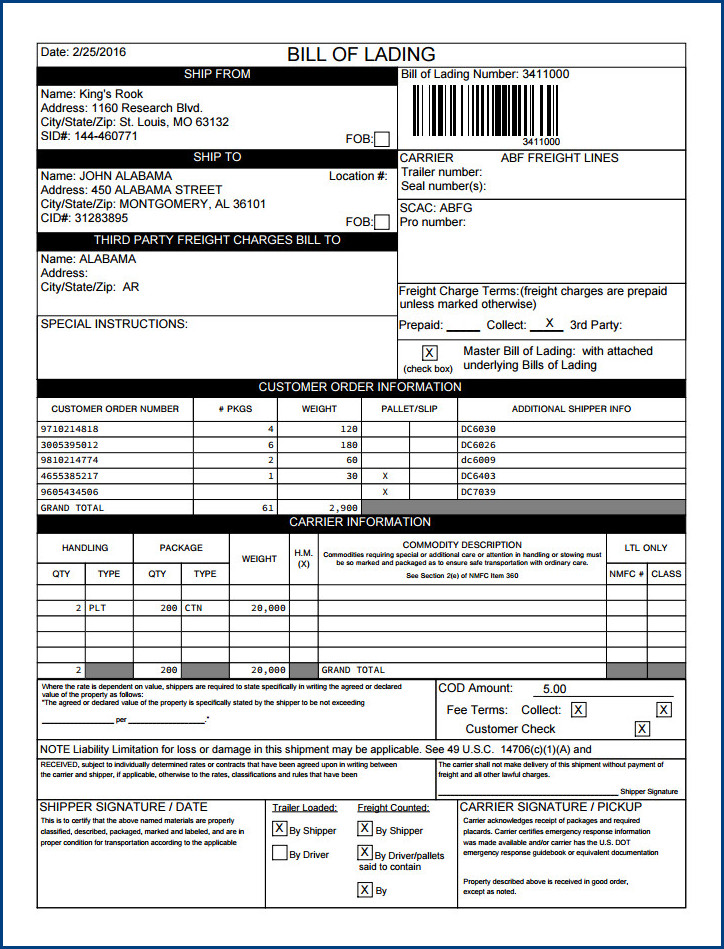
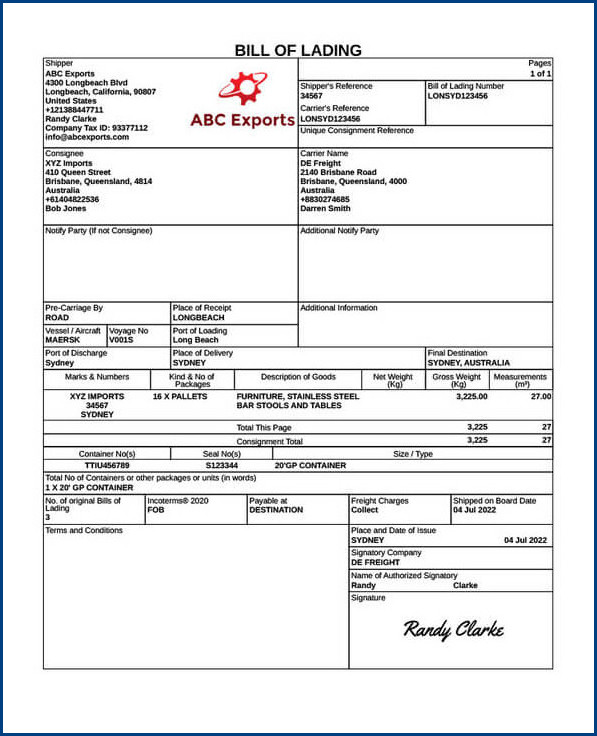
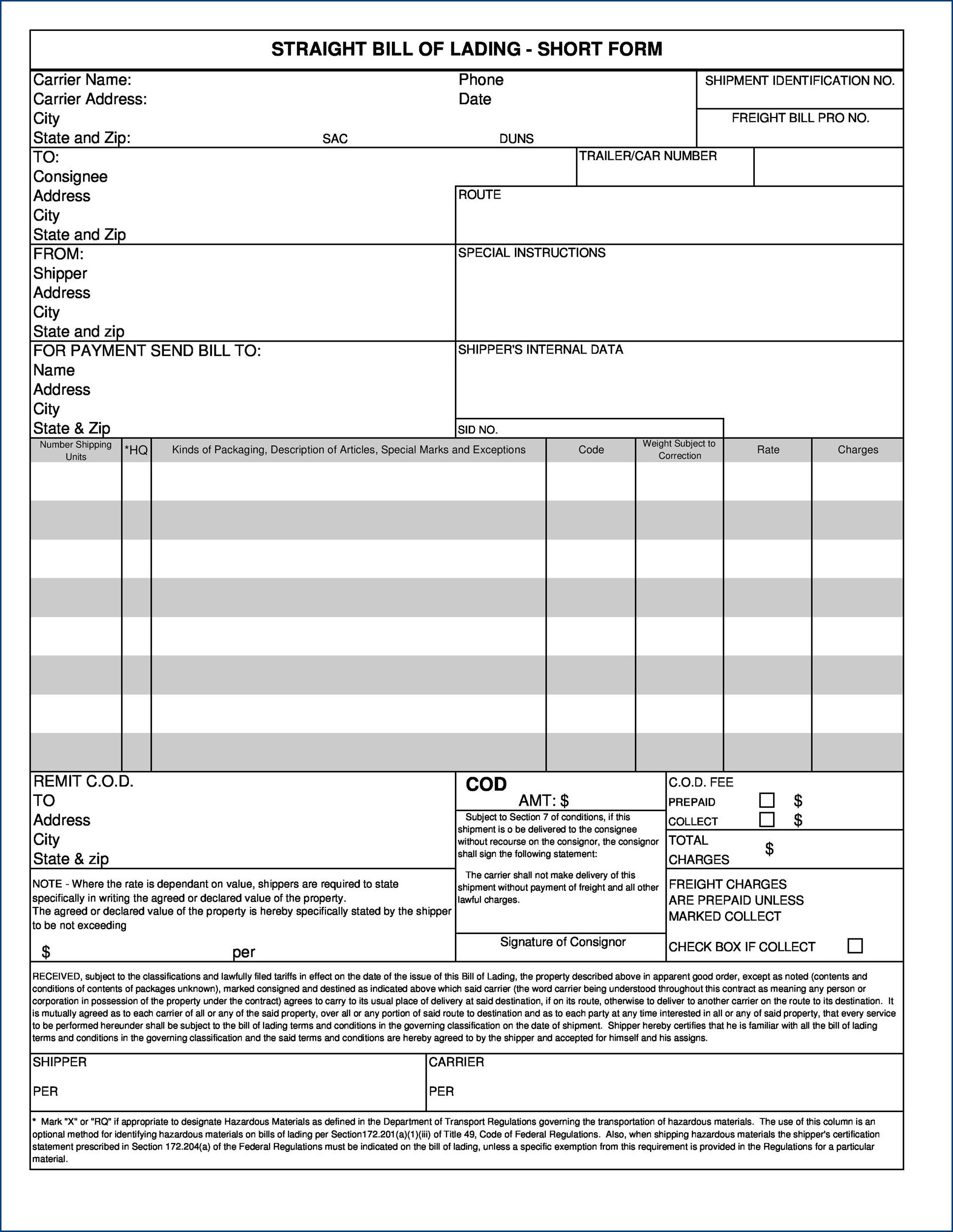
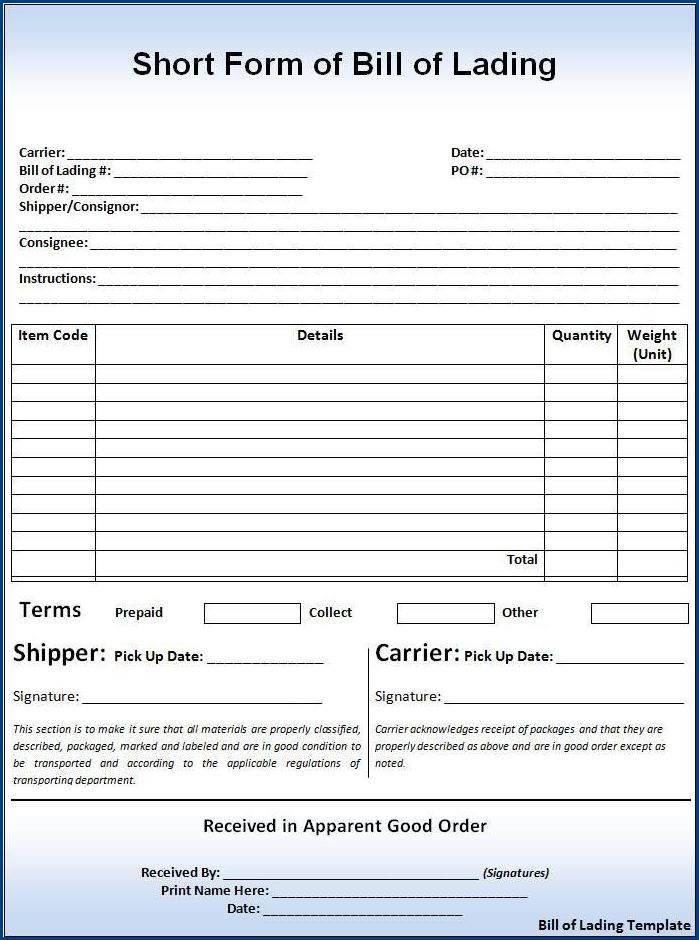
Is a bill of lading the same as a packing slip?
While a bill of lading and a packing slip may seem similar, they serve entirely different purposes. A bill of lading is a legal document issued by a carrier to acknowledge the receipt of goods and outline the terms and conditions of their transportation. It serves as evidence of the contract between the shipper and the carrier and includes details such as the origin and destination of the goods, the quantity, and any special instructions.
On the other hand, a packing slip is an internal document that accompanies the shipment, providing a detailed list of the items included in the package. It helps the recipient verify the contents and quantities of the shipment. So, while both documents are important in the shipping process, they serve distinct functions.
Who generates bills of lading?
When it comes to generating bills of lading, all companies that sell transportation services play a crucial role. A bill of lading is a legal document that serves as a contract between the shipper and the carrier. It outlines the details of the shipment, including the type of goods being transported, their quantity, and the terms of delivery. These documents are typically created by the transportation companies themselves, whether they are shipping by land, sea, or air. It is their responsibility to accurately generate and provide bills of lading to ensure a transparent and efficient transportation process.
Are bills of ladings negotiable?
Yes, bills of ladings are indeed negotiable. An original bill of lading is a crucial document in international trade that serves as proof of ownership and acts as a receipt for the goods being shipped. It is a negotiable document, meaning it can be transferred from one party to another, typically through endorsement or delivery. The negotiability of a bill of lading allows for the smooth flow of goods and payment in trade transactions. As such, it can be used as collateral for financing or as a means of transferring ownership of the goods during transit. The negotiability of bills of lading provides flexibility and security for parties involved in international trade.
How many bills of lading does a carrier issue?
When it comes to shipping goods internationally, a carrier generally issues three original bills of lading. This legal document serves as evidence of the contract between the shipper and the carrier, detailing the terms and conditions of the transportation agreement. Each original bill of lading holds equal value and can be used to claim the goods upon arrival at the destination port. The shipper needs to ensure that all three originals are properly signed and handed over to the consignee or their authorized representative. This practice ensures the smooth and secure transfer of goods from one party to another, maintaining transparency and accountability throughout the shipping process.
What to include in a bill of lading?
To ensure the accuracy and smooth processing of the shipment, the following information should be included in a bill of lading:
- Shipper and consignee details: The bill of lading should clearly state the name, address, and contact information of the shipper (the party sending the goods) and the consignee (the party receiving the goods).
- Description of goods: A detailed description of the goods being shipped should be included, including the quantity, weight, dimensions, and any distinguishing marks or numbers.
- Origin and destination: The bill of lading should specify the place of origin (where the goods were loaded onto the carrier) and the destination (where the goods are to be unloaded).
- Carrier information: The name and contact details of the carrier responsible for transporting the goods should be clearly stated.
- Terms and conditions: The bill of lading should outline the terms and conditions of the shipment, including the agreed-upon freight charges, any special instructions, and liability limitations.
- Signature and date: The bill of lading should be signed and dated by the carrier or its authorized agent, confirming the acceptance of the goods and the accuracy of the information provided.
Including all the necessary information in a bill of lading ensures that all parties involved in the shipment have a clear understanding of the terms and conditions. It helps prevent disputes and provides legal protection in case of any issues or damages during transit.
Therefore, it is essential to carefully complete and include all the required details in a bill of lading to facilitate a smooth and secure international trade transaction.
Bill of Lading Template | Word – Download
Bill of Lading Template | PDF – Download
